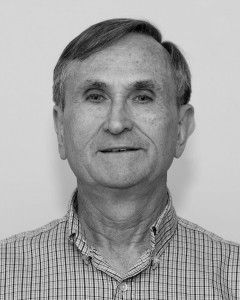 Jim Condon
Jim Condon
National Radio Astronomy Observatory,
Charlottsville, VA
“Aperture Synthesis Interferometry: the Secret Weapon of Radio Astronomy”
Abstract
Radio interferometers combine the coherently amplified voltage outputs from N >> 1 telescopes to create synthetic apertures that mimic impossibly large single dishes equipped with millions of receivers. This yields unmatched angular resolution, astrometric accuracy, sensitivity, and image dynamic range. However, quantum noise will forever limit sensitive aperture-synthesis interferometry to low (radio and far infrared) frequencies. The revolution in radio astronomy enabled by the current generation of aperture-synthesis interferometers (JVLA, ALMA, and VLBA) includes: (1) studying the formation of planetary systems around nearby stars by resolving thermal emission from protoplanetary dust disks, (2) measuring accurate masses of supermassive black holes in the nuclei of Seyfert galaxies, (3) determining the Hubble constant and constraining the dark-energy equation of state by geometrically measuring angular-size distances up to 200 Mpc, (4) resolving 98% of the radio source background by detecting source populations as faint as 1 microJy, and (5) preparing to image the event horizon of the supermassive black hole in the center of our Galaxy.